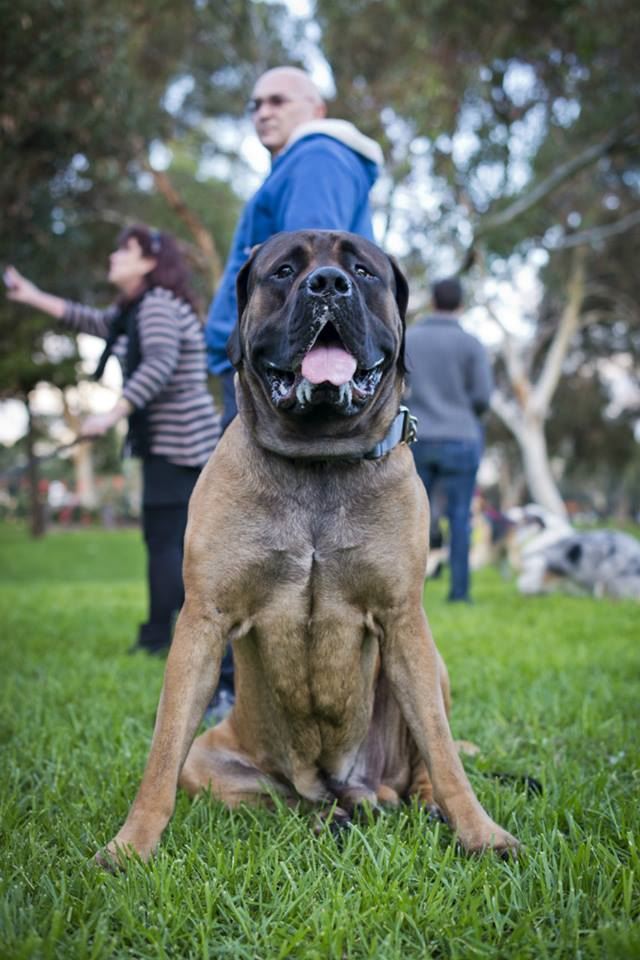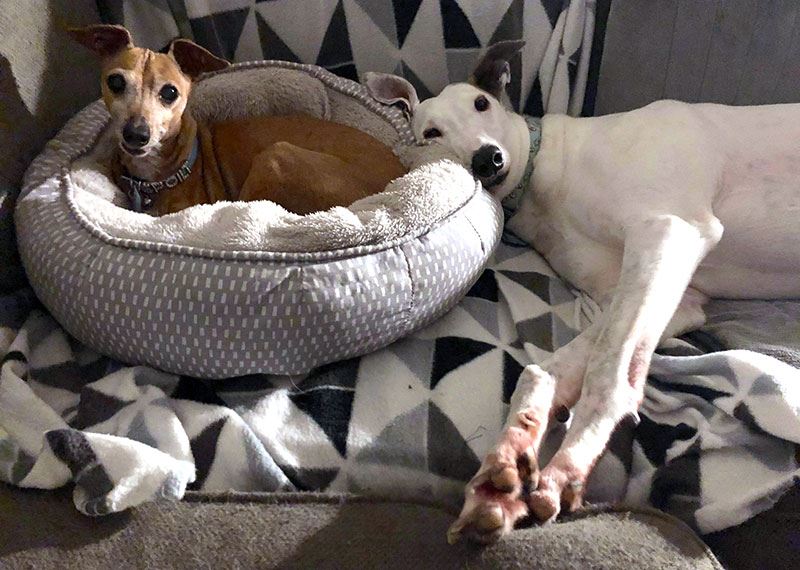Separation Anxiety is a term that we hear a lot these days but it is often used loosely. True separation anxiety is a clinical condition that needs to be treated with medication prescribed by a vet.
 Here are two examples of true separation anxiety:
Here are two examples of true separation anxiety:
- Two newly rescued small dogs who ate through a double sided gyprock wall while the new owners were out for less than 4 hours.
- A dog who, when left alone, even for 30 minutes, would salivate so badly that, when the owners returned, the floor was saturated with his saliva and he himself was drenched in it.
If you have a dog who behaves like this, you need to engage a positive reinforcement trainer without delay. This person will undoubtedly refer you to a veterinary behaviourist and together these two professionals will work with you and your dog.
There are other behaviours that can indicate that your dog worries about being without you. Digging holes in the garden, chewing the furniture, barking, and frantic greeting behaviours (or attempts to stop us from leaving without them) can fit into this category. Often though, being alone is simply a life-skill that we haven’t taught.
So, how can I train my dog to be happy when alone?
Like all animals, dogs learn by association. For this reason, you need to change the association between your absence and your dog’s worry.
- Reward calm behaviours. Any time you see your dog sitting calmly or lying down, praise it quietly and toss a treat to it. Use a particular phrase, for example, “Gooood boy/girl, calm” -- the words don’t matter, but the soft, calm tone of voice does. When leaving the house, don’t make a big deal of it. If you behave as if it’s a big deal, your dog will think it is.
- If your dog is racing around madly when it thinks you are leaving, ask him or her to sit or lie quietly down, and use the phrase from (1) above. When your dog has calmed down, reward calmly with a treat that the dog really values. Practice this at times other than when you actually want to leave - it’s hard to be calm yourself, if this is making you late!!
- Leave chewies and toys stuffed with food when you leave. Start by going away for only a few minutes, gradually extending the length of time until your dog barely notices your absence. DO NOT leave rawhide chews of any kind - your dog may choke on them.
- Use differing cues for differing lengths of time you will be absent. This might be something like “Back soon!” if you’re just going to put the bins out, or “See you later!” coupled with the chewie or food puzzle toys if you are going to be gone for quite a while.
- Use the kibble portion of their food as a food hunt - teach them to hunt for it in the grass of the lawn, or around the house if your dog stays inside, and then fling it out before you leave. They’ll get nicely tired and settle down for a sleep once they’re finished.
- Use meal times as a training opportunity by feeding them in a separate room so they look forward to being alone! Use food puzzle toys instead of a food bowl, so the time they are alone is extended and they are enjoying the time. Don’t shut them away, though - the dog needs to be able to make the choice to stay with its food or rejoin the family, and this empowerment helps reduce the anxiety.
- Leave a radio or television on when you’re not home so unexpected sounds are muffled and not a trigger to become worried.
- When you come home, put your bags down and greet your dog quietly and calmly, with body contact, for at least a minute to begin with. This allows the dog to make reconnection with you, and as time passes, and your dog feels more confident in your absence, s/he may well choose to break off the connection sooner.

If none of these things work, or your dog is clearly distressed when you’re not at home, contact a professional by visiting our member directory to find one nearest you.

 Here are two examples of true separation anxiety:
Here are two examples of true separation anxiety: